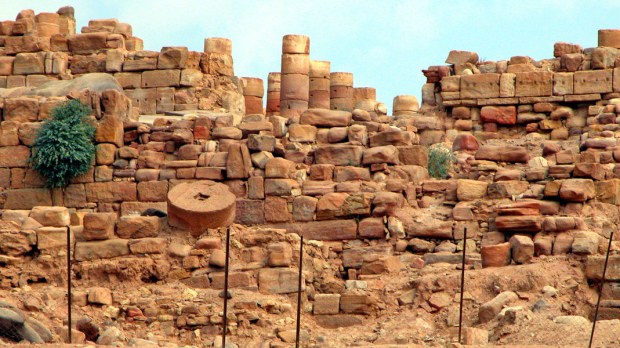During 2016, Jordan received more than six million visitors. That’s a 33.5-percent increase when compared to the previous year. The Hashemite Kingdom is now focusing on promoting its religious tourism destinations —particularly in its Christian heritage — making them the center of the Jordanian government strategies to keep the flow of foreign visitors growing. But Jordan is also home to monuments from an arcane past, that goes back to the days in which the ancient Nabateans controlled the incense trade in an empire that went from Damascus to the Hijaz mountains in Western Saudi Arabia. One of the most impressive monuments from those days is the awe-inspiring Temple of the Winged Lions.
This Temple of the Winged Lions – with beasts that might evoke those found at St. Mark’s Basilica in Venice, which were, in turn, taken there all the way from Constantinople — is, as described in Biblical Archaeology, “an opulent colonnaded temple built to honor al-Uzza, the supreme goddess of the Nabateans,” built on a small hill which overlooks what once was the city center. In its days, the temple was a rather massive complex including an impressive staircase leading to a monumental entrance. This entrance was in turn flanked by gigantic columns. Inside, one could then find the cult chamber, properly speaking. In it, a raised, altar-like podium was surrounded by columns. Even if most of them were adorned with Corinthian capitals, the ones closer to the podium featured these unique winged lions instead. Hence, the name of the temple.
Biblical Archaeology explains the temple, which was first excavated some 40 years ago, has suffered severe damage from both natural and human elements. The excavation had a negative effect on the temple itself but also on its surrounding landscape, “producing deep excavation trenches and intrusive spoil heaps that transformed the site into an inaccessible and even hazardous ruin that, for decades, was best avoided by tourists and locals alike.” However, since 2009, the Department of Antiquities of Jordan and the Petra Archaeological Park, in partnership with the American Center of Oriental Research (ACOR), have assembled “a team of world-class scholars and professionals to document, conserve and ultimately bring new life to this remarkable monument of one of the world’s great wonders.”

